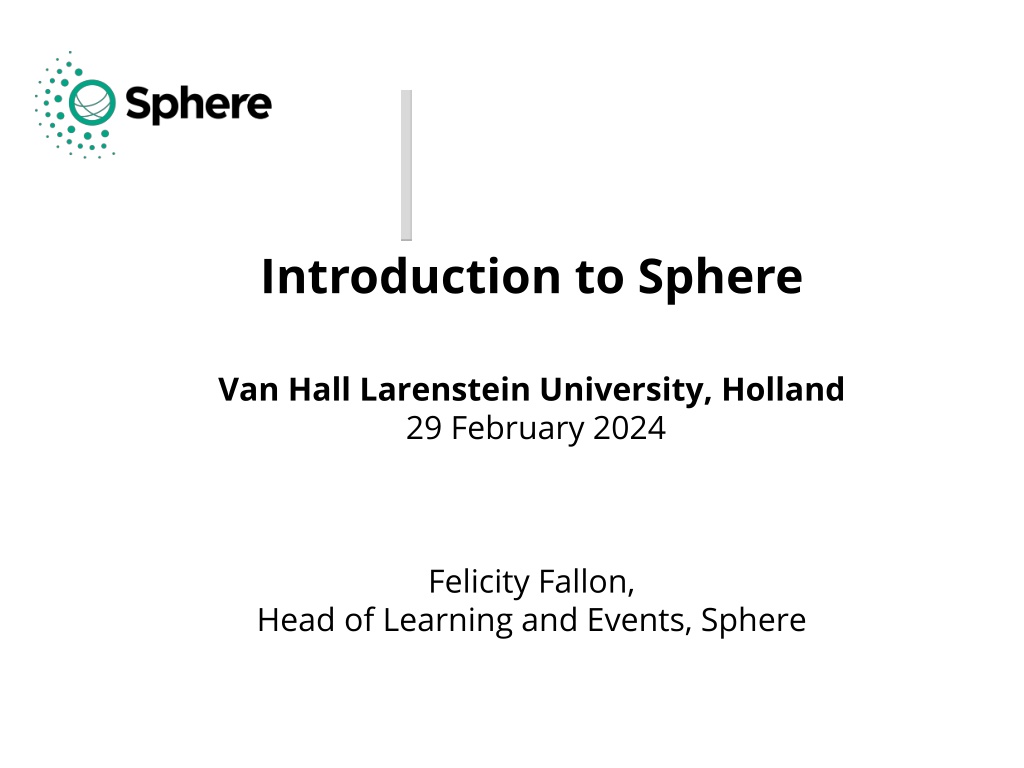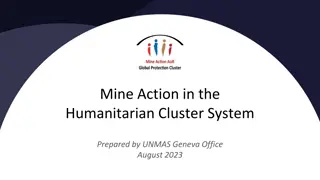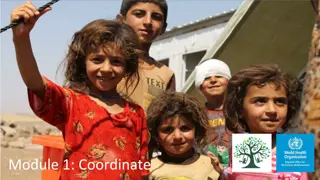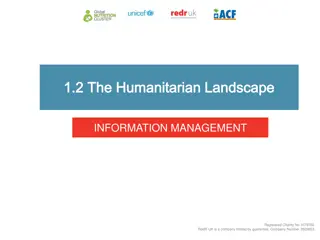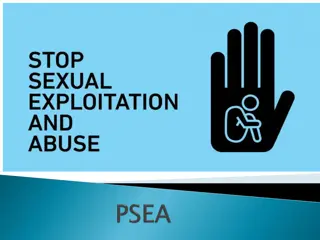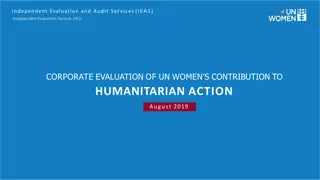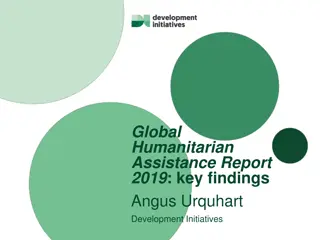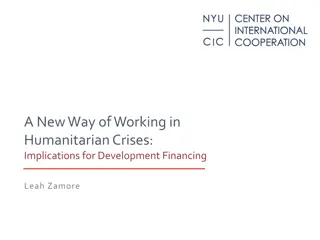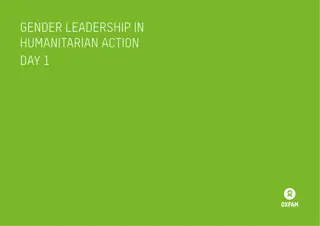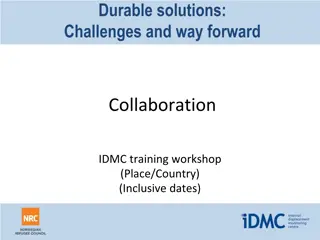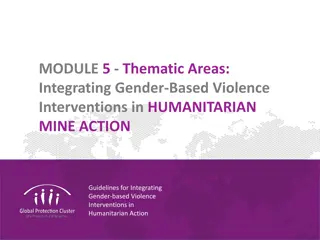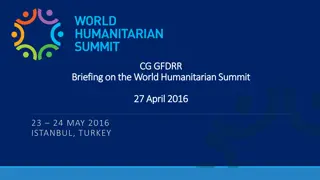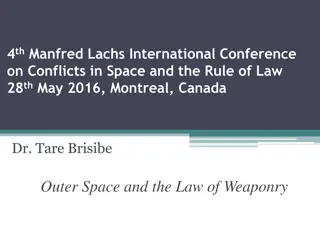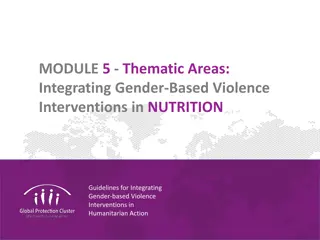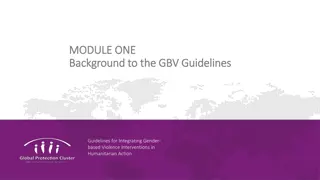Understanding Sphere: Humanitarian Standards and Practices
Learn about Sphere, a global movement focusing on humanitarian standards and quality assistance. Explore the Sphere Handbook, its philosophy, and the importance of humanitarian standards. Discover the key areas covered in the Handbook and why they are essential for effective crisis response. Join a community of over 100,000 humanitarian practitioners in upholding dignity and accountability in humanitarian work.
Download Presentation

Please find below an Image/Link to download the presentation.
The content on the website is provided AS IS for your information and personal use only. It may not be sold, licensed, or shared on other websites without obtaining consent from the author. Download presentation by click this link. If you encounter any issues during the download, it is possible that the publisher has removed the file from their server.
E N D
Presentation Transcript
Introduction to Sphere Van Hall Larenstein University, Holland 29 February 2024 Felicity Fallon, Head of Learning and Events, Sphere
Agenda Introductions What is Sphere? Deep dive into Sphere Handbook Deep dive into a Technical Standard WASH Haiti Case Study SLIDE
The Sphere Handbook SLIDE
The Sphere movement Started in 1997 by NGOs and the International Red Cross and Red Crescent Movement. Developed a Humanitarian Charter and humanitarian standards to be applied in humanitarian response. The Sphere Handbook is a primary reference tool for national and international NGOs, volunteers, UN agencies, governments and donors. Sphere is a worldwide community working to improve the quality and accountability of humanitarian assistance. SLIDE
The Sphere philosophy The Sphere philosophy is based on two core beliefs: 1. People affected by disaster or conflict have the right to life with dignity and, therefore, the right to assistance. 2. All possible steps should be taken to alleviate human suffering arising out of disaster or conflict. SLIDE
Why are humanitarian standards needed? Quality: efficient, effective and appropriate Accountability: answerable for actions Inclusive: people affected by crisis are involved in decisions that affect them Coordinated: "A common language" 7 SLIDE
What is in the Handbook? The Handbook is Sphere s flagship publication. It includes the Humanitarian Charter, the Protection Principles, the Core Humanitarian Standard, and Minimum Standards in four vital areas of response: Water supply, sanitation and hygiene promotion (WASH) Food security and nutrition Shelter and settlement Health SLIDE
Written by humanitarians, for humanitarians SLIDE
A worldwide community of 100,000+ humanitarian practitioners... SLIDE
...All using the Sphere Handbook The 2018 Sphere Handbook is available in 24 languages: Arabic, Bahasa Indonesia, Chinese (Standard), Chinese (Traditional), Congo Swahili, Dari, English, French, German, Japanese, Kikongo, Korean, Lingala, Nepali, Polish, Portuguese (Brazil), Portuguese (Portugal), Romanian, Slovak, Spanish, Tshiluba, Turkish, Ukrainian and Urdu. Discover all access options here: https://spherestandards.org/handbook-2018/ SLIDE
Deep dive into the Sphere Handbook You are working on a new transit camp for refugees. You are asked for advice on the following issues: Organising the living space in the shelter Promoting good hygiene practices in the shelter Protecting the shelter s most vulnerable residents Ensuring residents can participate in decisions that affect them, and give feedback List 10 references in the Sphere Handbook that will help you find the answers, and note which sections of the Handbook you found them in. You have 15 minutes. SLIDE
WAYS TO ACCESS SPHERE HANDBOOK and OTHER STANDARDS Sphere Handbook is available in 43 languages and more are underway! Other Handbooks have also been translated into other languages. Buy paper copies Read interactive handbook online Download PDF HSP Mobile application SLIDE 13
The Sphere Handbook eight interdependent chapters 1. What is Sphere? 2. The Humanitarian Charter 3. Protection Principles 4. Core Humanitarian Standard 5. Water Supply, Sanitation and Hygiene Promotion (WASH) 6. Food Security and Nutrition 7. Shelter and Settlement 8. Health FOUNDATION CHAPTERS TECHNICAL CHAPTERS 14 SLIDE
TECHNICAL CHAPTERS 15 SLIDE
The Humanitarian Charter is the cornerstone of the Sphere approach; recognises that people have a right to protection and assistance with dignity; and provides the ethical and legal foundation for the Protection Principles, the Core Humanitarian Standard, and the Sphere Minimum Standards. See pages 27 32 16 SLIDE
Protection Principles A practical translation of the Humanitarian Charter into four principles to guide humanitarian response: 1. Enhance people s safety, dignity, and rights and avoid exposing them to further harm. 2. Ensure people s access to impartial assistance, according to need and without discrimination. 3. Assist people to recover from the physical and psychological effects of 4. Help people to claim their rights. See pages 33 47 17 SLIDE
The Core Humanitarian Standard on Quality and Accountability (CHS) describes essential organisational responsibilities for quality and accountability in humanitarian response. See pages 49 88 18 SLIDE
SLIDE 20
Guidance Notes to Water Supply Standard 2.1 The quantity of water needed for drinking, hygiene and domestic use depends upon the context and phase of a response. It will be influenced by factors such as pre-crisis use and habits, excreta containment design and cultural habits A minimum of 15 litres per person per day is established practice. It is never a maximum and may not suit all contexts or phases of a response. For example, it is not appropriate where people may be displaced for many years. In the acute phase of a drought, 7.5 litres per person per day may be appropriate for a short time. In an urban middle-income context, 50 litres per person per day may be the minimum acceptable amount to maintain health and dignity. SLIDE
Haiti case study SLIDE
Groupwork Watch Sphere in Action Video from Haiti:https://www.youtube.com/watch?v=QVpVrKBQc7w After the video, you will be put into small groups for 20 minutes to answer the following questions: Which parts of the Sphere handbook are referenced, both explicitly and implicitly, in the video? Which technical standards from the Sphere handbook can you see being put into practise in the video? Which CHS (Core Humanitarian Standard) commitments can you see being put into practise in the video? SLIDE
Video Debrief Humanitarian Charter: We offer our services in the belief that the affected population is at the centre of humanitarian action, and recognise that their active participation is essential to providing assistance in ways that best meet their needs, including those of vulnerable and socially excluded people SLIDE
Video Debrief Protection Principle 1: Enhance people s safety, dignity and rights and avoid exposing them to further harm Supporting the capacity of people to protect themselves SLIDE
Debrief Sphere Handbook WASH chapter: SLIDE
Debrief Water Supply Standard 2.1: Access and Water Quality People have equitable and affordable access to a sufficient quantity of safe water to meet their drinking and domestic needs. SLIDE
Debrief Water Supply Standard 2.1: Water Quality Water is palatable and of sufficient quality for drinking and cooking, and for personal and domestic hygiene, without causing a risk to health SLIDE
Debrief Hygiene promotion standard 1.1: Hygiene promotion People are aware of key public health risks related to water, sanitation and hygiene, and can adopt individual, household and community measures to reduce them. SLIDE
Debrief Core Humanitarian Standard: SLIDE
Conclusions If you remember one thing from today... SLIDE
